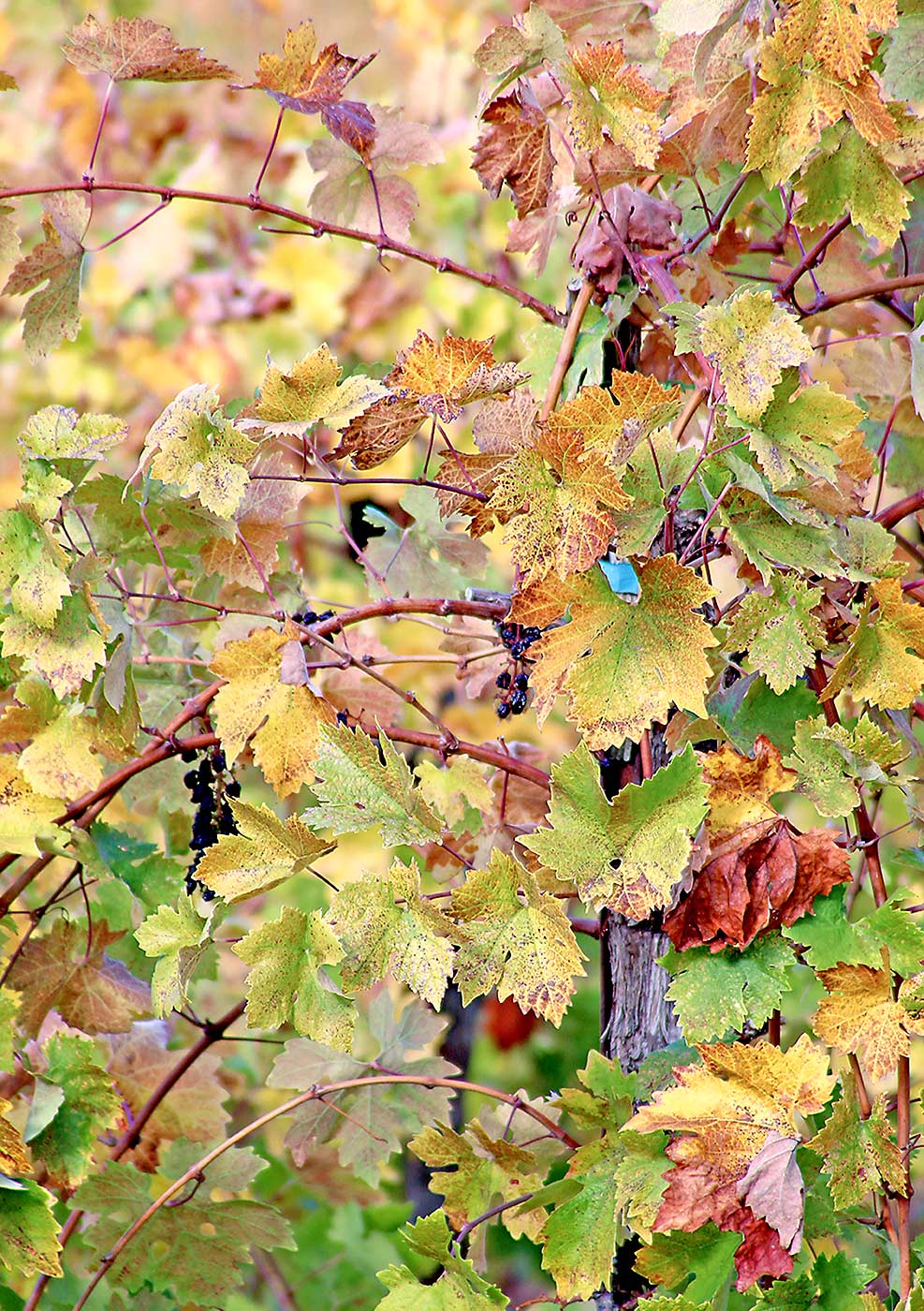
Grapevine red blotch virus, as seen here in a Zinfandel orchard in Northern California, reduces fruit quality by disrupting photosynthesis, according to a recent study by University of California, Davis, scientists. The fruit acquire less sugar and don’t produce enough of the desired anthocyanins, said viticulture extension specialist Kaan Kurtural. (Photo courtesy Event Kilmartin, the University of California)
In the 10 years since grapevine red blotch virus was first detected in the Napa region of California, it’s become the top threat to vineyards in the region. Infected vines produce poor quality fruit, so growers have tried delaying harvest to see if crops can be salvaged.
However, new research from the University of California, Davis, shows why that won’t work. By comparing the photosynthesis process in infected and healthy vines, replicated on both high- and low-vigor rootstocks, researchers discovered the virus disrupts both sugar and anthocyanin production.
“The good news is now that we know what it does, people won’t try to pay for snake oil treatments,” said Kaan Kurtural, viticulture extension specialist for University of California, Davis.
The only management response that works? Rogueing or replanting with clean vines.
Red blotch virus occurs in every major grape growing region in the U.S. One insect vector, the three-cornered alfalfa tree hopper, is known to transmit the virus in California and is more often found in vineyards near riparian areas. However, in New York, where that tree hopper has not been found, the virus does not seem to be spreading from the initially infected planting material, said Marc Fuchs, Cornell University plant pathologist.

Marc Fuchs
But even in California, the best management approach may be to “just ignore the hopper and put all the resources into removing the disease inoculum,” Fuchs said. “I understand why growers are not inclined to rogue and remove diseased vines, but once a vine is infected, there is no cure.”
The UC Davis researchers recently discovered that the red blotch-infected vines were not conducting water as efficiently. Without water stress, the sugars produced by the leaves were not moving into the fruit, which is the trigger for anthocyanin production, Kurtural said. Delaying harvest might appear to have a benefit, because sugars increase as the berries dehydrate, but it actually exacerbates the quality problems.
“The reason red blotch-infected vines have lower fruit quality is that there is not that signal to kick-start the anthocyanin synthesis,” Kurtural said.
It’s possible that applying additional water stress could mitigate the virus-induced changes to photosynthesis and physiology, he added, but researchers have not yet tested out that theory.
Researchers continue to look for other potential vectors as well and aim to develop cheaper, faster tools for detecting the virus, so nurseries can verify that planting stock is clean. Kurtural and colleagues hope to show that remote sensing, a technique that’s already been used to detect grapevine leafroll symptoms, will be able to detect red blotch symptoms sooner than the human eye.
These tools could help growers make management decisions about whether to rogue and replace individual infected vines or remove and replant an entire vineyard.
“In Napa we have a tremendous amount of land being redeveloped with clean stock right now,” Kurtural said. “It’s a huge cost.” •
—by Kate Prengaman






Leave A Comment